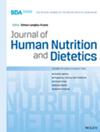‘A Necessary Idea Given Our Current Climate’: A Qualitative Study of Stakeholder Perspectives and Actions Required to Increase the Proportion of Plant to Animal Protein in Hospital Patient Menus
Abstract
Introduction
Replacing dietary animal protein with plant protein reduces greenhouse gas emissions and improves human health. Hospital foodservices can support change, but require buy-in and collaboration between people across the system.
Methods
A qualitative descriptive study aimed to explore hospital patient menu content expert perspectives regarding increasing the proportion of plant to animal protein in hospital patient menus and outline actions required to do this. Semi-structured interviews were completed with hospital or foodservice contractor employees and data were analysed using a general inductive approach.
Results
Twenty-five of the 35 content experts interviewed supported increasing the proportion of plant to animal protein foods. All voiced concerns, including patients not eating meals, jeopardising protein intake and increasing malnutrition rates, and the prohibitive cost of plant-based protein foods. Participants described steps to change patient menus, including a cyclical design process. This entailed consultation with stakeholders, setting a target, choosing a strategy, developing a menu and recipes, finding food product, planning the system and operations, and checking it works. Most felt the best ways to increase the proportion of plant to animal protein were to swap ingredients in familiar recipes or replace entire menu items (n = 21), add plant-based options to the menu (n = 25), and move the position of plant-based meals on the menu (n = 22).
Conclusion
This study conceptualised a process for increasing the proportion of plant to animal protein in hospital patient menus for use by hospitals or policymakers. Future studies should test these suggested menu changes, assessing impacts on greenhouse gas emissions, plate waste, malnutrition indicators, cost and patient satisfaction.


 求助内容:
求助内容: 应助结果提醒方式:
应助结果提醒方式:


